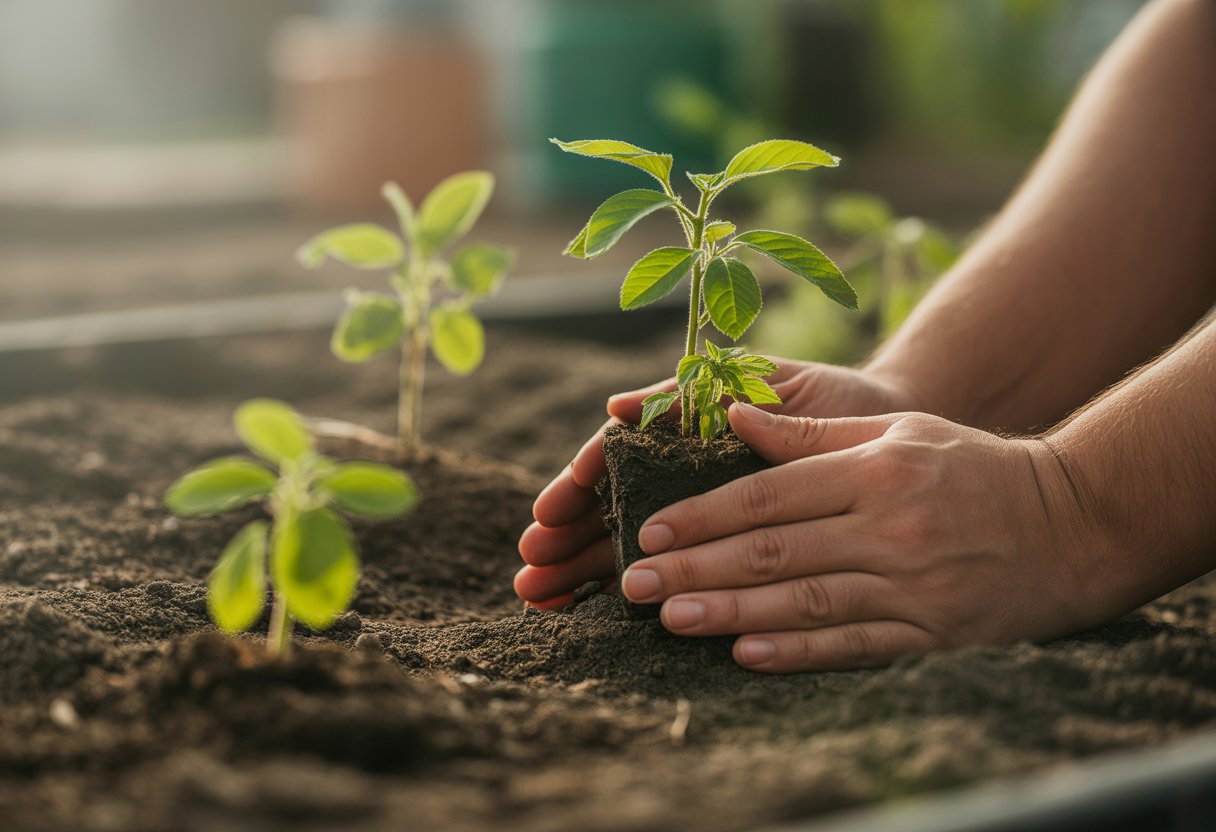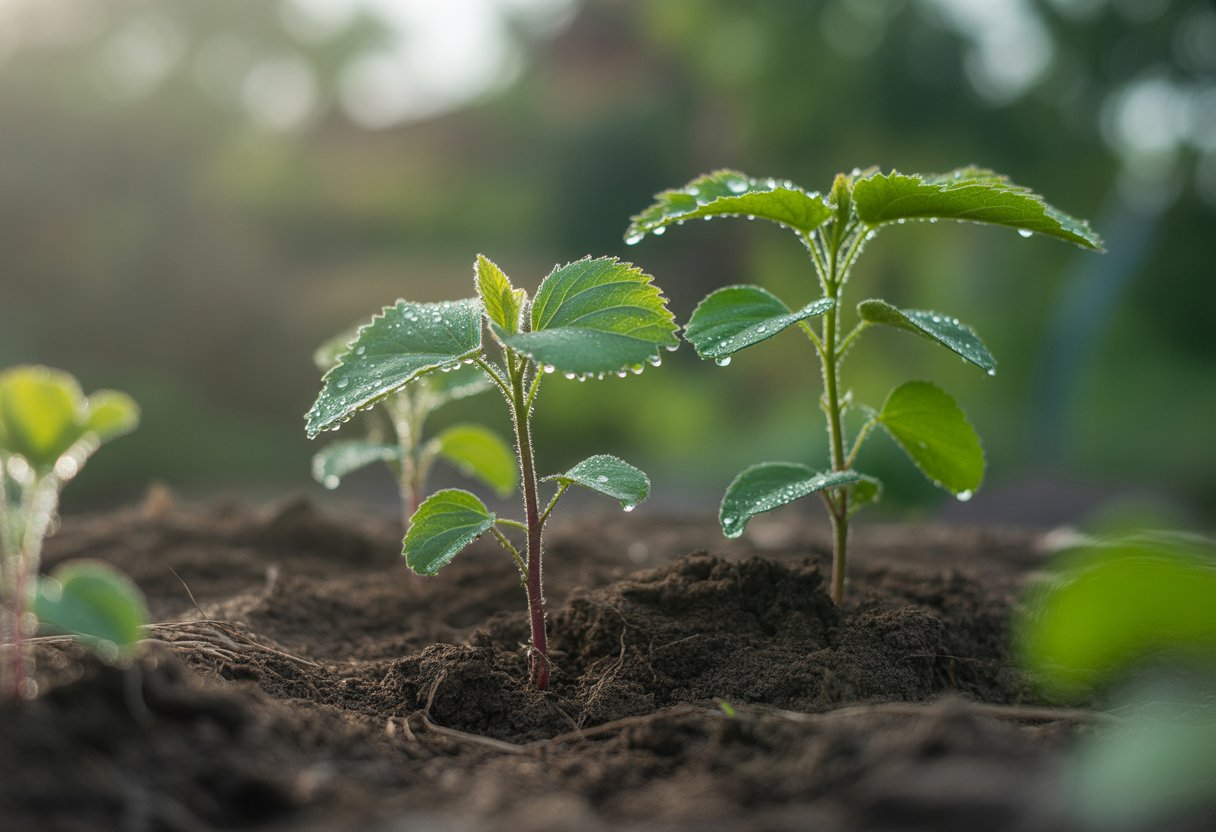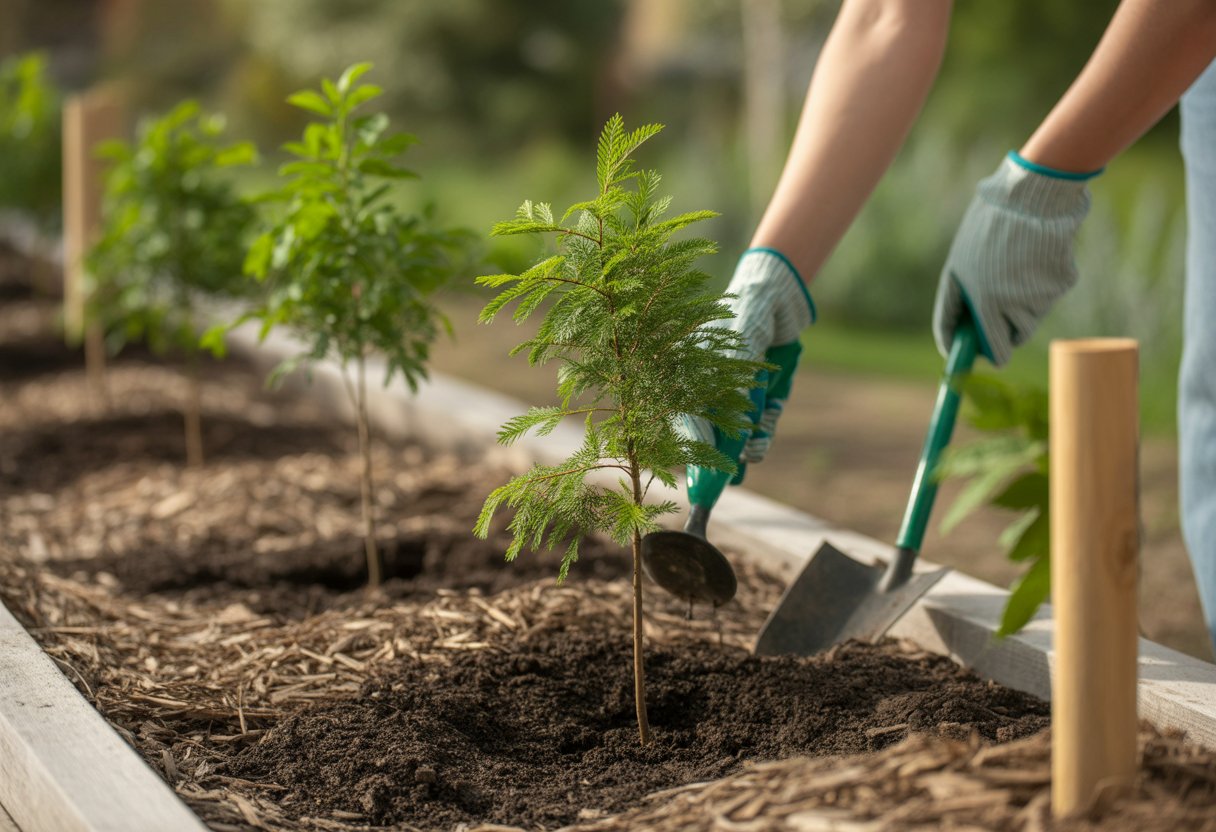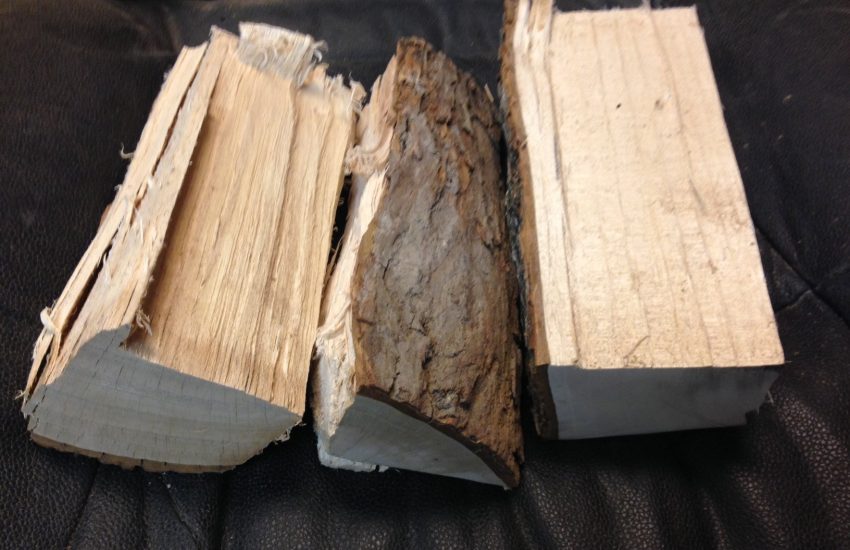Caring for Young Saplings: Essential Tips for Healthy Growth and Survival
Young saplings need a bit of extra attention if you want them to grow into strong, healthy trees. Watering, pest protection, and sunlight—they all matter more than you might think.
Ignore these basics, and you’ll probably end up with stunted or even dead trees. That’s a rough outcome after all your effort.

These little trees are much more vulnerable than the big ones. You’ve got to find a sweet spot—not too much water (hello, root rot), but not so little that they dry out.
Keep an eye on the soil. Sometimes you’ll need to tweak your care routine depending on weather, soil, or even just your own schedule.
If you know how to nurture young plants, you’ll help your landscape thrive. With steady care, young saplings can really liven up your outdoor space.
Essential Steps for Planting Young Saplings
Planting saplings isn’t just about digging a hole. You’ll want to pick the right tree species, choose healthy planting stock, and use good planting techniques.
Every choice you make here sets the stage for how well your sapling roots and grows.
Choosing the Right Tree Species
Start with your climate, soil, and the space you’ve got. Trees that fit your local conditions usually need less fuss and have a better shot at surviving.
Think about why you’re planting. Shade? Fruit? Maybe a windbreak? Native trees often handle local weather best and help the ecosystem.
If a species is prone to local pests or diseases, skip it. Check things like frost dates and drought tolerance to make sure your pick matches your site.
Selecting Healthy Seedlings and Potted Saplings
Look for seedlings with bright, healthy leaves and sturdy stems. If you see yellowing or wilted leaves, or bark that looks rough, don’t buy it.
Roots should be firm and white. Mushy or brown roots? That’s a no-go. In potted saplings, avoid roots that wrap around inside the pot—they’ll struggle later.
Try to get seedlings that match the season; too big or too small and they might not transplant well. Nurseries with a good reputation are usually your best bet.
Proper Planting Techniques for Bare-Root Cuttings
Soak bare-root cuttings in water for a few hours before you plant them. This helps them bounce back after transplanting.
Dig a hole about twice as wide as the root ball, and just a bit deeper. Spread the roots out gently—don’t cram or bend them.
Fill in with soil, pressing gently to remove air pockets. Water the sapling well, then add mulch to keep things moist and cool.
Don’t plant too deep. Keep the root collar (where roots meet stem) just above the soil.
Optimal Care for Young Trees
Caring for young trees means juggling water, weed control, and protection from the elements. Each one of those can make or break a sapling’s future.
Watering and Irrigation Best Practices
You want deep, thorough watering—not just a sprinkle. Aim for about 12 inches deep so roots reach down.
Drip irrigation or soaker hoses work better than sprinklers. They get water right where it’s needed and help prevent disease.
Most new saplings need 10–15 gallons per week if it’s dry. Use a soil probe or just poke your finger in the soil to check moisture.
If it rains or the weather cools off, cut back on watering. Too much can drown roots or invite fungus.
Implementing Effective Weed Control
Weeds are greedy—they’ll snatch water, sunlight, and nutrients from your saplings. Clear a three-foot circle around the base to give your tree a fighting chance.
Mulch helps a ton. Use wood chips or something similar, two to four inches deep, but don’t pile it against the trunk.
Hand-pull weeds or use a hoe, but don’t dig too deep near the roots. If you go for herbicides, be picky—only use them if they’re safe for young trees.
Protecting Saplings from Climate Stress
Young trees can’t handle wild weather swings. Windbreaks (like burlap screens) or stakes help keep them upright.
During heat waves, shade cloth can keep them from frying. When frost threatens, a frost cloth can be a lifesaver.
Weather’s getting weirder, so keep an eye out. If you pick species that already thrive locally, you’ll have fewer headaches.
Supporting Healthy Growth and Development

You’ll want to pay attention to how your sapling grows, especially the main stem. Protect it from sun and physical damage, and tweak your care as the seasons roll by.
Maintaining the Central Leader
The central leader—that’s the main stem shooting up—is what gives your tree its shape. If you let side branches take over, the tree can end up weak and lopsided.
Prune regularly. Snip off competing stems and side shoots that try to crowd the leader. Make clean, angled cuts just above healthy buds.
Stakes can help, especially in windy spots, but don’t leave them on forever. Check ties now and then to avoid choking the trunk, and remove stakes after the first year.
Preventing Sunscald and Physical Damage
Sunscald happens when the bark gets hit by harsh sunlight, especially during late winter or early spring. It can leave your sapling open to pests and disease.
Wrap trunks with breathable guards or paint them white to reflect the sun. It’s a simple trick, but it works.
Keep lawnmowers, pets, and tools away from the trunk. A little guard or just clearing grass and debris can save you a headache later.
Adapting Care Through the Growing Season
Your sapling’s needs change as the months roll by. In early spring, focus on pruning and guarding against late frosts.
Once summer hits, deep watering becomes your main job. Mulch helps lock in moisture and keeps weeds down.
As fall approaches, ease up on watering and skip heavy fertilizer. Trees need to slow down and get ready for winter. Watch for pests and diseases—the timing depends on your region.
Long-Term Considerations for Maturing Saplings

Think ahead as your saplings grow. They’ll shape your property’s privacy, look, and even its ecosystem. Where you plant and how you care for them now will matter for years.
Establishing Privacy Hedges
Saplings like dense ornamental evergreens and fast-growing fruit trees make great privacy hedges. They block noise, slow down wind, and even help neighboring plants.
Plant saplings close enough so their canopies overlap, but give roots enough space. Prune regularly so the hedge stays full and healthy.
Some good picks:
- Thuja (arborvitae) for year-round privacy
- Leyland cypress for fast growth
- Hawthorn or mulberry for fruit and thick leaves
Keep the soil healthy with mulch and the occasional fertilizer. If it’s dry, water your hedge until it’s well established.
Planning for Landscape and Ecosystem Integration
Pick saplings with more than just looks in mind—think about local wildlife and soil health too. Native ornamental trees usually help pollinators and birds more than exotic ones.
Check the mature size and root spread so you don’t end up with roots wrecking pipes or crowding foundations. Choose saplings that fit in with what’s already growing, and you’ll boost biodiversity while naturally cutting down on pests.
Fruit trees bring extra ecological perks and can feed both people and wildlife, but they need plenty of room and sunlight. If you mix fruit-bearing trees with ornamentals, you’ll get a landscape that’s both lively and balanced as it grows.


